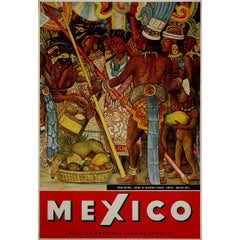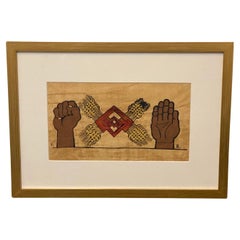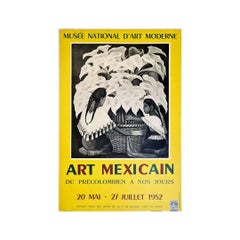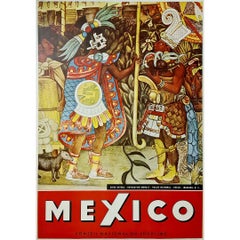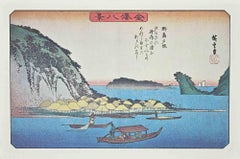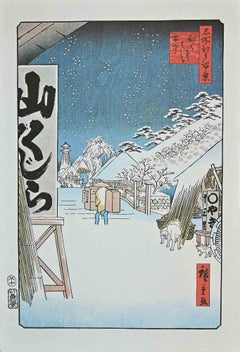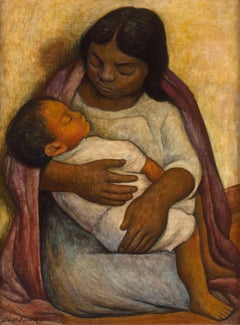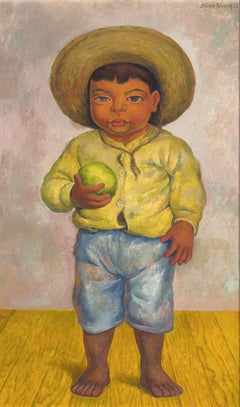Diego Rivera Art
Known all over the world for his colossal murals, Diego Rivera was one of the leading artists of the 20th century. The Guanajuato, Mexico-born painter’s works adorn the interiors of many public buildings throughout his native country, including the Cortés Palace in Cuernavaca, the National School of Agriculture in Chapingo and the Ministry of Public Education in Mexico City. (Rivera’s family moved to Mexico City in 1892, and he later lived and worked in Mexico’s capital with his third wife, fellow Mexican artist Frida Kahlo.)
Rivera expressed Mexican national identity like no one before him. He developed his own style of Cubism, reintroduced fresco painting as a major discipline and was a pioneer of Mexican Muralism. Rivera’s artworks have had a significant impact on the international art world.
At the age of 10 Rivera received a scholarship to study at the Academy of San Carlos in Mexico City. When he was 21, the governor of Veracruz provided the artist with a grant to study in Europe. He began his studies abroad in Spain, but ended up settling in Paris in 1909, where he befriended Spanish artist Pablo Picasso and esteemed French painter Georges Braque. Picasso's Cubist paintings were an inspiration for him — in his own work, Rivera adopted elements of Cubism, a revolutionary art movement for European culture. The painter later developed an admiration for the work of Postimpressionist artists such as Cézanne, but Renaissance paintings — and Italian frescoes, generally — had a monumental influence on the work that followed.
In 1921, Rivera returned to Mexico to work with social realist painter David Alfaro Siqueiros. In the wake of the Mexican revolution, they shared a vision of turning the interior of public buildings into a canvas for exploring concepts associated with national identity and to express sympathy for the revolution.
In 1930, Rivera traveled to the United States, where he examined modern industry and issues facing the working class in commissioned pieces at the California School of Fine Arts in San Francisco, the Detroit Institute of Arts and Rockefeller Center in New York City. For the latter, Rivera’s Man at the Crossroads outraged his sponsors owing to its expression of leftist sentiment — it featured a portrait of Russian revolutionary Vladimir Lenin.
After Rivera refused to remove Lenin from the fresco in the lobby of the RCA building in Rockefeller Center, the artist’s sponsors had the work destroyed. Rivera later repainted the composition in a mural in Mexico, relying on photographs by Lucienne Bloch — his unpaid assistant on the Rockefeller project — that she had covertly taken before the painting was destroyed.
It was the suggestions of artist George Biddle, who had studied with Rivera and was influenced by the Mexican Muralists movement, that helped lay the groundwork for the Public Works of Art Project, which was included as part of Franklin Delano Roosevelt’s New Deal.
When Rivera died in 1957 he left unfinished a grandiose mural on the history of Mexico for the National Palace in Mexico City.
1950s Diego Rivera Art
Paper, Lithograph
1930s Modern Diego Rivera Art
Lithograph
Mid-20th Century Symbolist Diego Rivera Art
Lithograph
1930s Realist Diego Rivera Art
Lithograph
1950s Diego Rivera Art
Lithograph, Paper
1950s Diego Rivera Art
Lithograph, Paper
20th Century Post-Impressionist Diego Rivera Art
Watercolor, Rice Paper
1950s Realist Diego Rivera Art
Paper, Watercolor
Mid-20th Century Modern Diego Rivera Art
Lithograph
Mid-20th Century Modern Diego Rivera Art
Lithograph
Mid-20th Century Modern Diego Rivera Art
Lithograph
1960s Abstract Diego Rivera Art
Paper, Lithograph
1730s Realist Diego Rivera Art
Engraving
20th Century Realist Diego Rivera Art
Lithograph
1970s Realist Diego Rivera Art
Offset
Late 19th Century Symbolist Diego Rivera Art
Oil
20th Century Realist Diego Rivera Art
Lithograph
1980s Realist Diego Rivera Art
Paper
Late 19th Century Symbolist Diego Rivera Art
Oil
1730s Realist Diego Rivera Art
Engraving
20th Century Modern Diego Rivera Art
Masonite, Tempera
20th Century Post-Impressionist Diego Rivera Art
Oil, Board
20th Century Post-Impressionist Diego Rivera Art
Paper, Graphite
1930s Modern Diego Rivera Art
Lithograph
20th Century Post-Impressionist Diego Rivera Art
Charcoal, Rice Paper
1990s Diego Rivera Art
Offset
Early 2000s Diego Rivera Art
Offset
1990s Diego Rivera Art
Offset
1990s Diego Rivera Art
Offset
1990s Diego Rivera Art
Offset
1940s Modern Diego Rivera Art
Lithograph
1940s Modern Diego Rivera Art
Lithograph
Diego Rivera art for sale on 1stDibs.
Artists Similar to Diego Rivera
- 1stDibs ExpertFebruary 13, 2024Diego Rivera's style of art was Cubism. However, the Mexican artist developed his own distinctive version of the style. In 1909, he settled in Paris, where he befriended the Spanish artist Pablo Picasso and esteemed French painter Georges Braque, both of whom were pioneers of Cubism. Rivera built on their work, creating works in bright colors and varying the thickness of paint to produce bold textural effects. In addition to his experimentation with Cubism, Rivera also worked in the social realism style later in his career. On 1stDibs, explore a variety of Diego Rivera art.
- 1stDibs ExpertMarch 22, 2022Yes, Diego Rivera did 20 self-portraits during the course of his life. However, his wife, Frida Kahlo, produced one of the best-known depictions of the artist in her painting Diego and I, which depicts him with a third eye. You'll find a variety of Diego Rivera art on 1stDibs.
- 1stDibs ExpertApril 16, 2024You can see Diego Rivera's paintings in many places. His work is in the collections of museums across the world, such as the Art Institute of Chicago, the Museum of Modern Art in New York City, the Museo Mural Diego Rivera in Mexico City and the Peggy Guggenheim Collection in Venice, Italy. In addition, you can view the artist's murals in many of their original locations, including the City Club in San Francisco and the Detroit Institute of Arts. On 1stDibs, shop a range of Diego Rivera art.
- 1stDibs ExpertApril 5, 2022Some of Mexican painter Diego Rivera’s large murals can be seen today in Mexico City, Detroit, and San Francisco, and his paintings are displayed in numerous museums across Mexico and the United States. Shop a selection of Diego Rivera paintings from top art dealers on 1stDibs.
